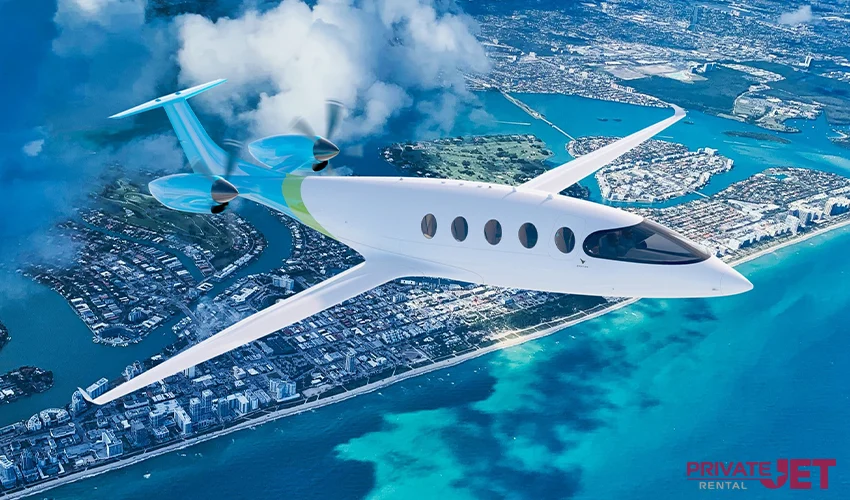Understanding the concept of electric planes

Electric airplanes are a revolutionary invention of the aviation industry. It’s a cleaner and more sustainable alternative to traditional planes even when you plan to rent a jet. These flying machines use electric motors powered by batteries thereby removing the need for fossil fuels and reducing the emission of carbon. Let’s explore how they work and how they can reshape the future of air travel.
What are electric planes?
As discussed, they’re a groundbreaking development in the aviation industry that harness electric motors for propulsion and not fuel. They draw their power from batteries or fuel cells and store the electricity for a sustainable and eco-friendly flight.
Electric planes have a lot of advantages and play a huge part in reducing the damage to the environment. Though there are a few challenges along the way, research is going to overcome these hurdles and make way for a greener and more efficient future in aviation.
How do electric planes work?
For recharging on the ground, electric planes use a system in which depleted batteries can be quickly exchanged with fully charged ones. This helps in multiple flights with minimal downtime. Moreover, the electricity is generated with hydrogen fuel cells that power their electric propulsion systems for a longer flight.
This prevents the need for fossil fuels resulting in zero direct emissions during the flight, minimizes noise pollution and better environmental sustainability. Ongoing advancements in battery technologies are pushing the feasibility and potential of electric planes.
Advantages of electric planes
Electric aircraft are a game-changing innovation in the aviation industry that are a great alternative to traditional planes. They make flying a sustainable and environmental-friendly mode of transportation. Below are some of the advantages of these planes that highlight their potential:
- Environmental benefits
- Cost efficiency
- Enhanced energy
- Technological advancements
Environmental benefits
Electric airplanes are very helpful for the environment. They eliminate the use of fossil fuels, reduce the emission of greenhouse gas and contribute to prevent climate change. These aircraft are also less noisy and don’t bother the quality of life for residents near airports.
Cost efficiency
They can also reduce operating costs in the long run. The initial investment is usually higher but the cost of electricity is typically lower than that of traditional aviation fuel. Also, electric planes have fewer moving parts which means lower maintenance and repairs.
Enhanced energy
Efficient electric propulsion systems used in electric planes are way better than combustion engines. These systems can convert a higher percentage of energy into thrust for more fuel efficiency and longer flight ranges. The employment of regenerative braking and energy recovery systems further adds to the efficiency of the planes.
Technological advancements
The development of electric planes is a result of accelerated technological progress in the aviation industry. It also involves innovations like efficient batteries, lightweight materials, cutting-edge power management systems and aerodynamic designs. The progress in electric aviation can also be transferred to electric cars and renewable energy that’s another good news.
The present condition of electric planes
The current situation brings forward the remarkable progress made in electric aviation. The existence of many impressive aircraft models and research efforts is proof that it’s no longer just a concept but a reality. Let’s explore the exciting world of electric planes and their transformation:
- Electric aircraft models
- Challenges and constraints
Electric aircraft models
Many organizations and research institutions have presented significant development like Airbus E-Fan X, the Zunum Aero electric commuter plane and the Lilium Jet. These aircraft showcase the feasibility and future of electric aviation as per different sizes and capabilities.
Challenges and constraints
In spite of the hopeful signs of progress, electric planes still undergo certain limitations that need to be handled. The problem of the limited storage capacity of batteries, the weight and size of electric propulsion systems and the absence of charging infrastructure are some of the main roadblocks that can only be overcome with further research, development and investment.
Electric planes vs. traditional planes: A comparison
The table below provides a comprehensive understanding of the differences between electric and conventional planes. Let’s compare their key aspects to highlight the advantages and challenges of electric aviation and its future potential:
| Aspect | Electric planes | Conventional planes |
| Environmental Impact | Low carbon emissions | High carbon emissions |
| Noise Pollution | Reduced noise | High noise levels |
| Operating costs | Potentially lower | Higher |
| Energy efficiency | Higher | Lower |
| Range | Limited | Higher |
| Infrastructure | Limited | Well-established |
Unlock the potential of electric planes
Witness a leap of transformation in the aviation industry with electric planes that offer a cleaner, sustainable and more advanced alternative to conventional airplanes. Though there are challenges on the way, research and development efforts are continuously helping the electric aviation sector. As technology advances, we can expect a revolution in the way we travel and create greener air transportation.






